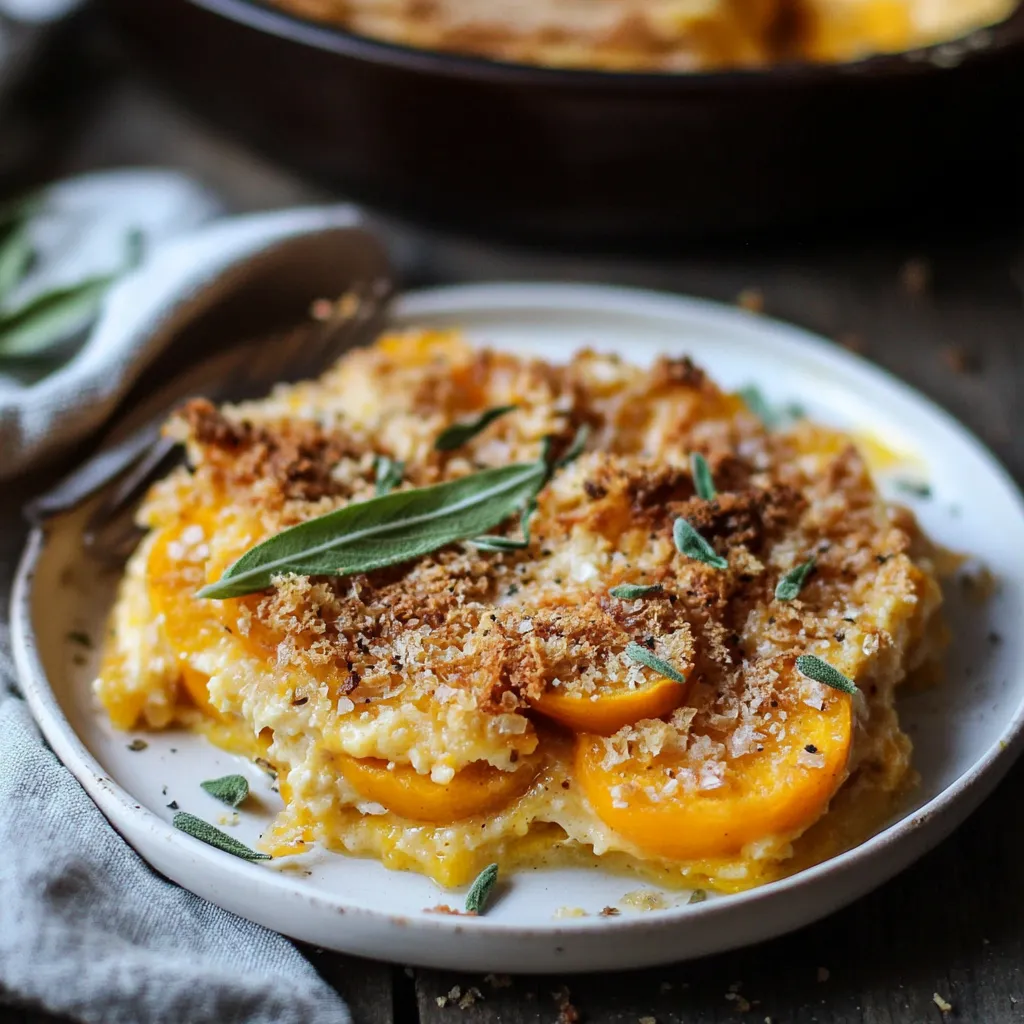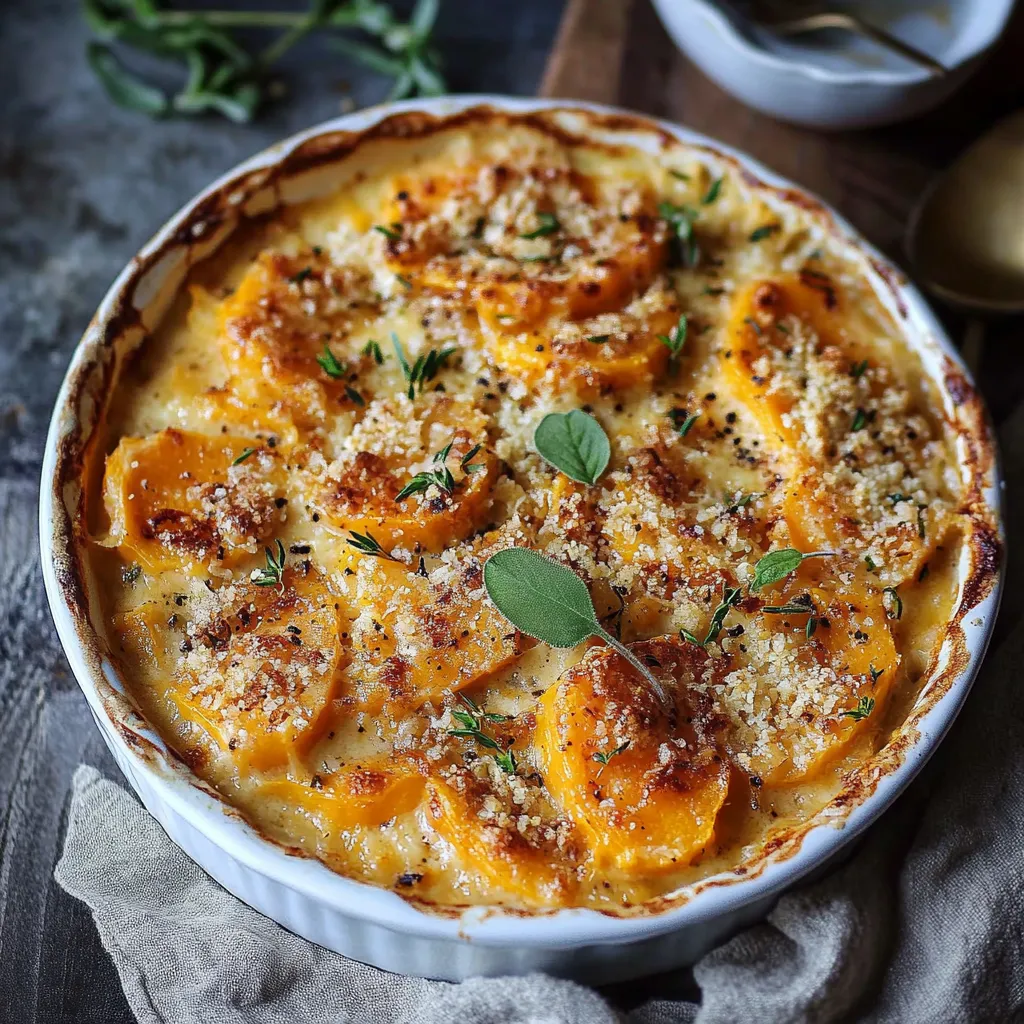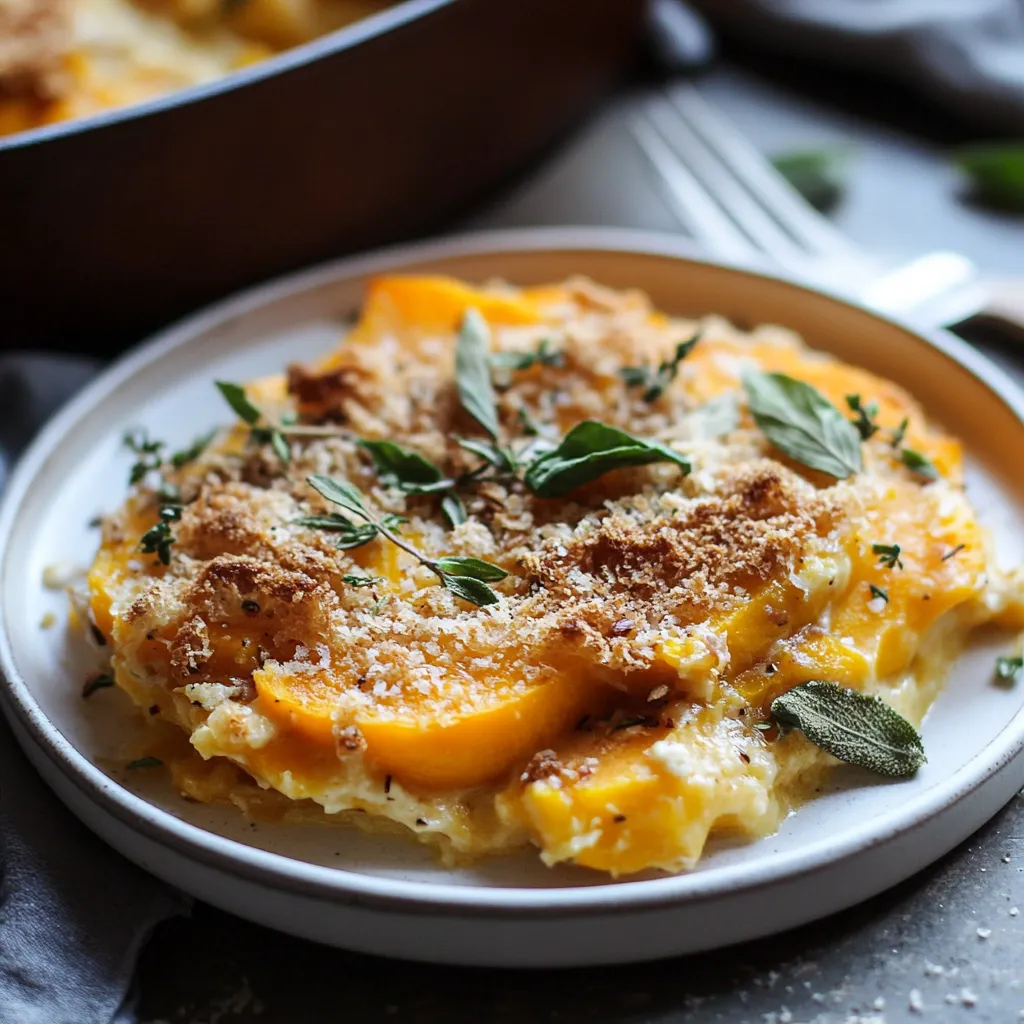 Pin it
Pin it
The rich, creamy layers of butternut squash combined with melted leeks create an unforgettable comfort dish. This butternut squash gratin transforms the humble winter squash into something truly spectacular, bringing together the earthiness of fresh sage and the subtle crunch of toasted walnuts. The delicate balance of flavors makes this dish a standout addition to any gathering, especially during the cooler months when we crave something warming and substantial.
I discovered this recipe during a fall cooking workshop, and it has become my family's most requested side dish. The way the squash becomes tender while maintaining its shape, combined with the aromatic leeks, creates a dish that even my vegetable-hesitant nephew enjoys.
Essential Recipe Components
- Butternut Squash: Choose a squash with a long, thick neck for the most uniform slices. Look for one that feels heavy for its size and has unblemished, matte skin
- Leeks: Select firm leeks with crisp, bright green leaves and white stalks at least 4 inches long. Fresh leeks provide a sweeter, more delicate flavor than onions
- Sage Leaves: Fresh sage adds an aromatic, earthy note that dried sage cannot match. Pick leaves that are silvery green without any dark spots
- Heavy Cream: Full fat cream creates the richest texture. The fat content helps prevent curdling during baking
- Gruyère Cheese: Look for aged Gruyère with tiny crystal formations for the best flavor. The aging process develops complex nutty notes
- Walnuts: Choose fresh, light-colored nuts without any rancid smell. Toast them just before using to enhance their natural oils
Creating Your Gratin
- Preparation:
- Position your oven racks and gather equipment. Wash and prep your vegetables with care. Ensure all ingredients reach room temperature.
- Squash Preparation:
- Carefully peel the butternut squash, ensuring no tough skin remains. Cut precise rounds that will cook evenly and create beautiful layers.
- Leek Softening:
- Gently cook the cleaned leeks until they become silky and translucent. Add aromatics at just the right moment to release their essential oils.
- Assembly Process:
- Create your layers with precision, starting with a thin water base. Press each layer gently to ensure even cooking throughout the dish.
- Final Touches:
- Crown your creation with the most beautiful squash slices and a generous sprinkle of cheese and walnuts.
My grandmother always said the secret to a perfect gratin lies in the patience of layering. She taught me to treat each layer like painting a picture, taking time to arrange the ingredients just so. The aroma of this dish always brings me back to her kitchen.
Perfect Pairings
Transform this gratin into a complete meal by serving it alongside a crisp green salad dressed with light vinaigrette. For special occasions, pair it with roasted chicken or turkey. A glass of crisp white wine complements the creamy, savory flavors perfectly.

Recipe Adaptations
This versatile gratin welcomes numerous adaptations to suit different dietary needs and taste preferences. For a dairy-free version, coconut cream provides the perfect richness while adding a subtle sweetness that enhances the butternut squash. Plant-based cheese alternatives work wonderfully, especially those made from cashews or almonds. For those seeking additional texture, try incorporating layers of wild mushrooms between the squash, or sprinkle hemp seeds among the walnuts for added protein and crunch.
Kitchen Storage Guide
Properly stored, this gratin maintains its delightful flavors for several days. Allow it to cool completely before transferring to an airtight container. The layers will actually meld together beautifully overnight, making it an excellent make-ahead dish. For reheating, let it come to room temperature first, then warm it gently in the oven to maintain its creamy texture. Adding a splash of warm cream before reheating helps restore the original silky consistency.
Creating this gratin has taught me that patience in the kitchen yields the most remarkable results. The slow building of flavors, careful layering, and gentle baking transform simple ingredients into something truly memorable. This dish reminds us that comfort food can be both elegant and nourishing, perfect for gathering loved ones around the table.
Autumn Gatherings
This gratin shines brightest during autumn gatherings, when the weather turns crisp and we naturally crave warmer, more substantial dishes. It brings a touch of elegance to casual family dinners while being impressive enough for special occasions. The beautiful layers of golden squash make it a stunning centerpiece for any table setting. I've found it pairs beautifully with roasted meats, though it's substantial enough to serve as a main course for vegetarian guests.
Family Traditions
Over the years, this recipe has become part of our family's tradition, making appearances at holiday tables and special celebrations. Each time I prepare it, I think of the memories we've created around this dish. My children now help with the layering, making it a beautiful way to pass down cooking knowledge and create lasting connections through food. The simple act of preparing this gratin together has become as meaningful as enjoying the final dish.
Seasonal Selection
The best time to make this gratin is during peak butternut squash season, from early fall through winter. The natural sweetness of in-season squash elevates the entire dish. I've learned that taking time to select the perfect squash makes a noticeable difference in the final result. Look for squash that feels heavy for its size and has a matte, beige skin without any green lines or soft spots. This attention to ingredient quality transforms a good dish into an exceptional one.

Recipe FAQs
- → Can I make this butternut squash gratin ahead of time?
- Yes, you can assemble it ahead and refrigerate before baking, or fully bake and reheat at 350°F. Just bring it to room temperature before cooking for even results.
- → How do I make this gratin dairy-free?
- Replace the heavy cream with coconut milk and use vegan parmesan instead of gruyere cheese to make it dairy-free.
- → What's the best way to slice the butternut squash?
- Use a sharp knife to cut 1/8-inch thick rounds after peeling. When you reach the seeds, scoop them out and continue slicing.
- → How do I know when the gratin is done?
- After 45 minutes covered, test the squash with a knife tip - it should be tender. Then bake uncovered at 400°F for 15 minutes until golden brown.
- → Can I use different nuts or cheese in this recipe?
- Yes, you can substitute the walnuts with pecans or almonds, and the gruyere can be replaced with parmesan or your preferred cheese.
